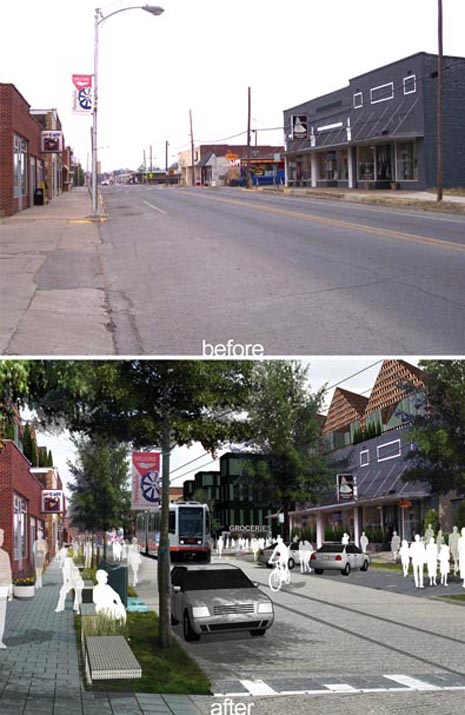
FAYETTEVILLE, Ark. – A study regarding light-rail transit was one of seven projects to win a 2010 Great Places Award from the Environmental Design Research Association.
“Visioning Rail Transit in Northwest Arkansas 2030,” which won for planning, was created by the University of Arkansas Community Design Center and Fay Jones School of Architecture, as well as Washington University in St. Louis and its Sam Fox School of Design & Visual Arts. The place-planning awards recognize projects that make proposals for the future design, use or management of a place.
This winning study is an advocacy-planning document envisioning smart growth development through rail transit at the regional scale. It represents five years of research, grassroots advocacy and planning studies by a consortium of design professionals, educators and students led by the Community Design Center, an outreach program of the Fay Jones School of Architecture.
It looked at a highway-dominated region that is also home to major corporations that depend on transportation logistics: Wal-Mart Stores, Tyson Foods and J.B Hunt Transport Services. Prior to the economic downturn, this was the nation’s sixth-fastest growing region, with the population of 350,000 expected to double within the next 15 years.
The study was intended to prompt local governments to fund a $2 million feasibility study to revive the existing rail corridor as a light-rail system. The larger planning goal is to spur the anticipated growth toward urban options that are presently underutilized and culturally devalued, said Steve Luoni, director of the Community Design Center.
“This is much easier to do than some would think and, more than anything else, leverages the livability and economic advantages already in northwest Arkansas,” Luoni said. “The other two award-winners in planning were Rotterdam and New York, which is pretty good company.”
The other winning projects in the planning category were for a long-term strategy for the port lands of Rotterdam in the Netherlands and for the redesign of the streetscape and security in Battery Park City, a planned community in lower Manhattan.
The Great Places Awards were co-sponsored with Places, a peer-reviewed journal, in cooperation with Metropolis magazine. The awards, which were given in design, planning, research and book categories, recognize professional and scholarly excellence in environmental design, according to the Environmental Design Research Association’s Web site. In its 13th year, the program has an interdisciplinary focus, a concern for human factors in the design of the built environment and a commitment to promoting links between design research and practice, the Web site states.
This is Community Design Center’s second award in the Great Places Awards program, formerly known as the EDRA/Places Awards. The previous one came in 2006 for the Habitat Trails project.
Judging for the awards was held in February at the University of Illinois, Urbana-Champaign. Jurors were Ralph E. Johnson, national design director, Perkins & Will Architects, Chicago; Laura J. Lawson, professor of landscape architecture and director of the East St. Louis Action Research Project, University of Illinois, Urbana-Champaign; David Miller, founding partner, The Miller/Hull Partnership, and department chair and professor of architecture, University of Washington, Seattle; Lynda Schneekloth, professor, School of Architecture and Planning, State University of New York at Buffalo; Kathleen L. Wolf, research social scientist, College of the Environment, University of Washington, Seattle, and USDA Forest Service, Pacific Northwest Research Station.
Awards will be presented at the annual EDRA meeting in June in Washington, D.C. Winning projects and commentary will be published in Places.
The Great Places Awards reflect the related missions of the Environmental Design Research Association, Places and Metropolis. The association — a national organization of design professionals, social scientists, scholars and practitioners — was founded in 1968. Its conferences and publications explore the relationship between people and their physical surroundings, suggesting how environmental design can be more responsive to human needs, according to its Web site.
Places, founded 26 years ago by architecture faculty at the Massachusetts Institute of Technology and the University of California at Berkeley, is now an online-only publication. Metropolis magazine explores the ways a broad spectrum of design disciplines shape the world.
Contacts
Steve Luoni, director, Community Design Center
Fay Jones School of Architecture
479-575-5108, sluoni@uark.edu
Michelle Parks, senior director of marketing and communications
Fay Jones School of Architecture and Design
479-575-4704,
mparks17@uark.edu